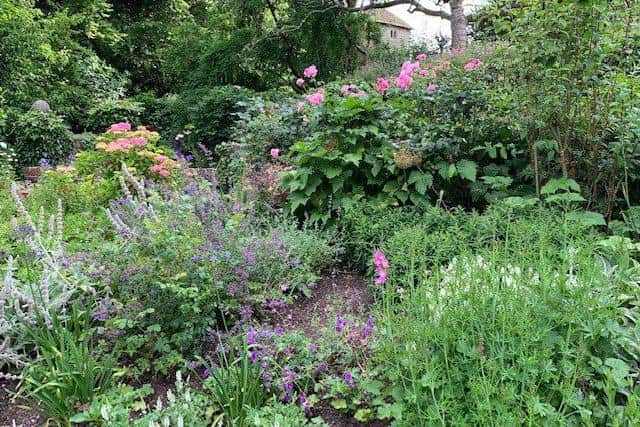Sculptor's gardens to open again for Murray Downland Trust
and live on Freeview channel 276
The gardens at Casters Brook will be open in support of the Murray Downland Trust on Saturday, May 11 from 11am to 3.30pm. It will be the 12th time the Jacksons have opened their gardens for the charity, raising thousands of pounds towards its work.
The trust manages six nature reserves on the South Downs, including at Heyshott and Harting. Their aim is to enhance the downland landscape, encouraging flowers, butterflies and birds to multiply in these important and rare habitats.Philip and Jean Jackson have spent much time and effort developing their gardens to be an integral part of the landscape under the Downs, wrapping around the churchyard at Cocking. The event offers an opportunity for visitors to enjoy the gardens and some 20 of Philip Jackson’s sculptures set in their four acres. His work includes many public commissions include the Bomber Command Memorial in Green Park, London and the statue of St Richard at Chichester Cathedral, as well as private commissions.
Advertisement
Hide AdAdvertisement
Hide AdThe garden event includes a plant sale in the morning, and in the afternoon the opportunity to hear from Philip himself, as he conducts a special tour of his sculptures. There will also be a produce stall, news of the trust’s reserves, a demonstration hive from local beekeepers, a local ukulele band, and the opportunity to chat to other keen gardeners. Refreshments are served all day, including locally-made cakes and a traditional hot dog BBQ. Entrance is £5 per adult.


The Murray Downland Trust was founded in 1993 and named after Betty Murray (1909-1998), who with her sculptor brother, Kenneth, was a keen conservationist. They were concerned at the state of the Downs and set about conserving the natural grassland by reducing scrub themselves. Betty was principal of Bishop Otter College, Chichester (1948-1970) and chair, and later president, of the Sussex Archaeological Society.
The trust manages areas of unimproved chalkland in the South Downs National Park, focusing on its five reserves in West Sussex and Hampshire, Heyshott Escarpment, Heyshott Down, The Devil’s Jumps, Under Beacon, Buriton Down and Hurston Warren. All are of high natural and archaeological interest, with four of them designated Sites of Special Scientific Interest (SSIs). The trust, which is supported by volunteers, is currently seeking new opportunities to build corridors for wildlife in the local area.
Event co-organiser Naomi Barnett said: “The trust has had considerable success in creating and maintaining open downland in which flowers, butterflies and birds can flourish. A notable achievement has been the expansion of the rare Duke of Burgundy butterfly through careful reserve management, as well as increasing the number and species of orchids and encouraging habitat for declining Tree Pipits, which breed on the escarpment. All this costs money and although our volunteers and their vital work keep costs down as much as possible, expenses run into thousands of pounds.”
Advertisement
Hide AdAdvertisement
Hide AdNick Sherwin, the chairman of the Murray Downland Trust, said the trust obtained grants from Natural England to help with the costs of maintaining the reserves which are leased under different arrangements, including with the Cowdray Estate and West Dean Estate.
“We also encourage donations and legacies, and have a loyal membership which we are keen to expand (individual membership costs £30 a year). It’s a wonderful way for people to make a personal contribution towards the preservation of our increasingly rare downland habitat and towards meeting the challenges of our current biodiversity crisis.”
Further information: www.murraydownlandtrust.org.uk; www.philipjacksonsculptures.co.uk